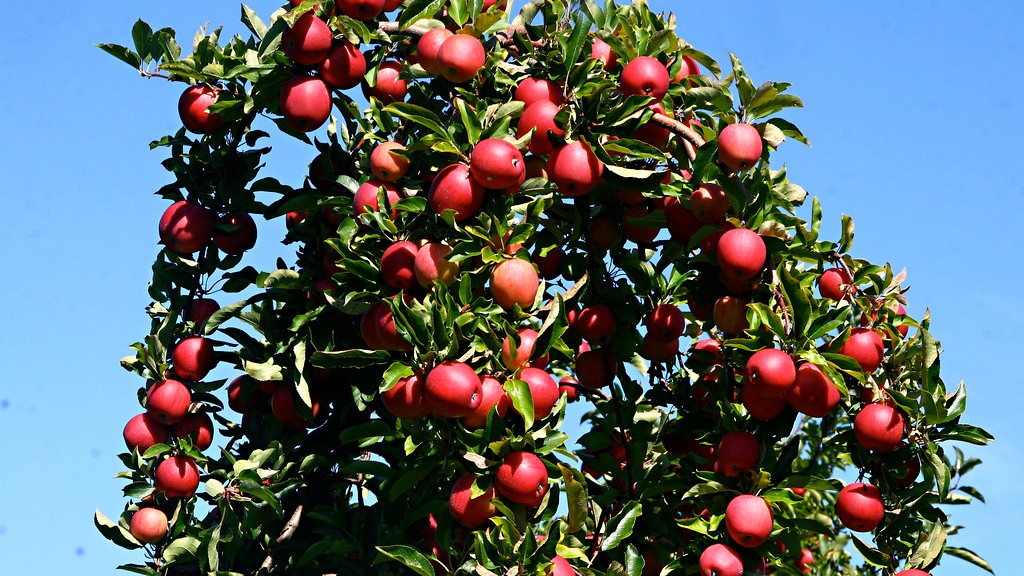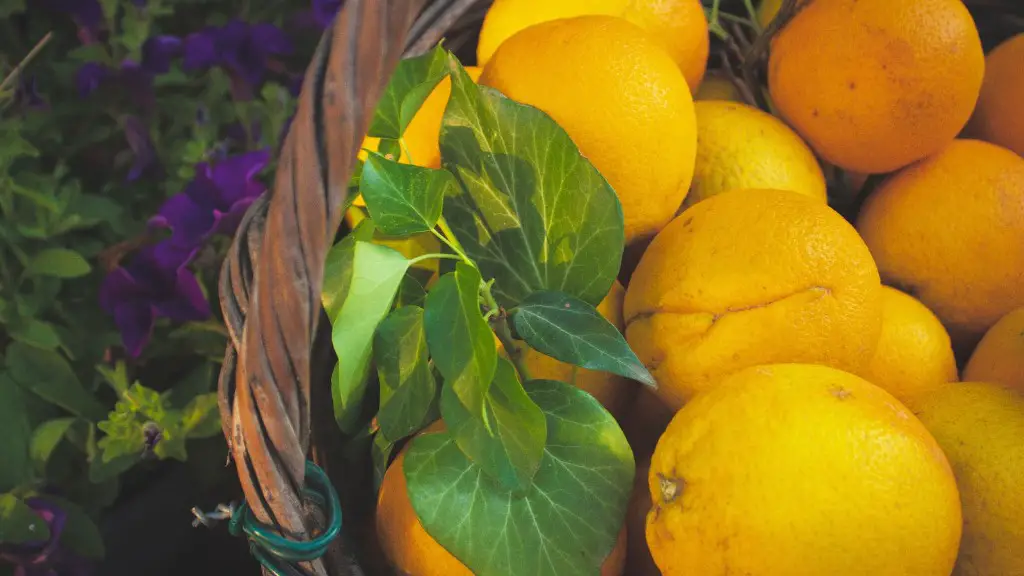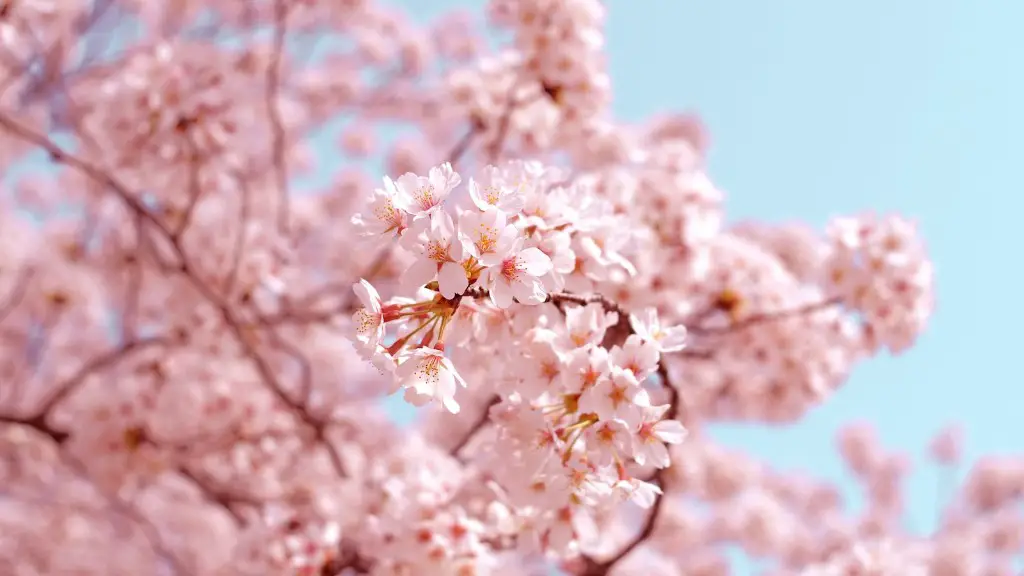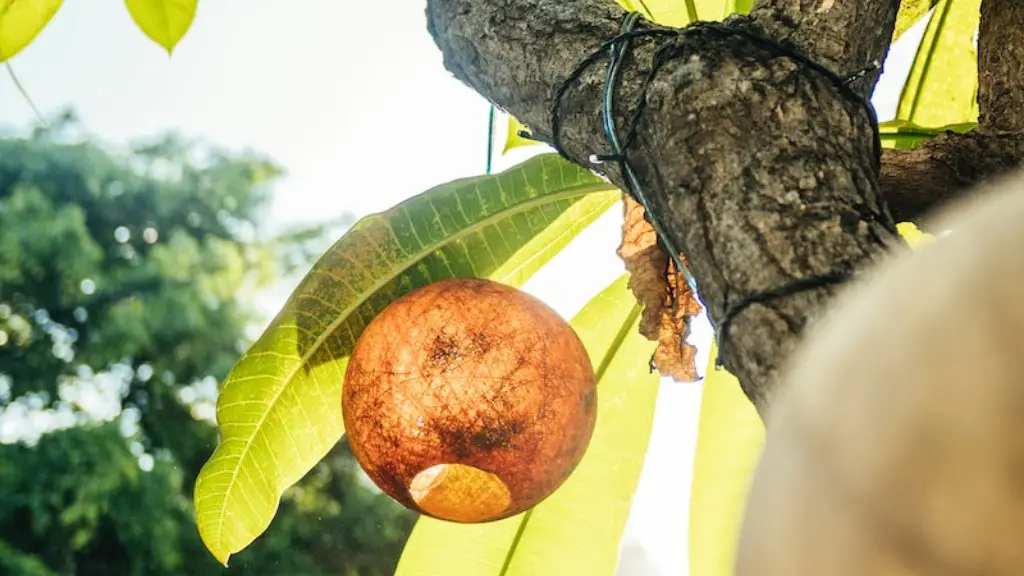Apple trees should be pruned regularly for multiple purposes. Pruning trees provides more efficient air circulation and boosts airflow amidst the foliage. This increases tree health, flower quality and fruit size. When pruning an apple tree, consider the bigger picture rather than just the immediate needs of the tree. Ideally, pruning should begin when a tree is at least three years old. The most ideal time to prune an apple tree is while it is dormant in the wintertime.
Apple trees should be pruned when sap flow is at its lowest – usually during late winter or early spring. Pruning branches in the late winter when the tree is no longer actively growing will give tree surgeons the best view of what needs to be removed. Pruning during this period also minimizes the likelihood of disease or pests ravaging the tree after it has been cut, as infection is higer in summer.
When pruning an apple tree, the focus should be on promoting more efficient air circulation and developing the tree’s structure. Always prune branches and limbs just before their point of origin from the trunk. Any part of a tree that forks should be cut down to encourage branching and to allow for healthy and even growth of the tree. Consider also the placement of branches relative to other branches.
Finally, when pruning, never remove more than a quarter of the foliage of the tree. Removing too much could harm the tree and limit the amount of fruit it produces. Cuts should be made at a 45-degree angle, just outside of the collar of the branch. This will encourage even healing and reduce the chances of a tree experiencing any afflictions.
Why is pruning important?
Pruning is an important process for apple trees, as it helps to maintain the health and shape of the tree. It also helps to remove dead, diseased or broken branches to prevent them from infecting the rest of the tree. Pruning also makes it easier for light and airflow to reach the tree’s core, reducing the risk of disease and pests.
Additionally, pruning makes it easier to harvest apples as trees that are healthy and pruned properly will produce larger and more plentiful fruit. Pruning trees also helps to redirect energy so that the tree grows in the direction desired by the farmer or gardener, creating a beautiful and full tree.
Tree pruning is so important that it should not be neglected. An apple tree that is not pruned properly will be short-lived and produce fewer, smaller fruit. Without regular pruning, an apple tree could become weak, vulnerable to pests and disease, and unable to produce quality fruit. Therefore, all apple trees should be pruned every year.
When is the best time to prune?
Winter is generally the best time to prune, when cell walls are their weakest. Pruning at this time allows for the most efficient healing of the tree’s wounds and lessens the risk of infections. In addition, pruning during the wintertime affords better visibility of the tree’s structure to allow for more even pruning throughout.
Tree pruning is not recommended during the summer months due to the increased risk of pests and diseases, and the additional stress to the tree. For example, pruning during the summer months could worsen cankers as the wounds are unprotected and left vulnerable to infection.
Trees should be pruned early enough in wintertime such that some buds are still visible before the trees’ full dormant stage. This will allow for fresh growth come the next season. However, pruning should not be done when night temperatures drop to near freezing, as the threshold would be too low to protect the wound while it is healing.
What tools are needed to prune an apple tree?
The tools used for pruning apple trees depend upon the size of the tree and the type of pruning needed. For smaller branches and twigs, hand pruners and lopping shears work well. For larger branches, pruning saws are necessary, as well as hand saws for smaller branches. Long-handled loppers are useful for branches that cannot be reached with a saw.
Sharp tools are essential for proper pruning. Dull tools can cause splitting, which leads to uneven healing, as well as tearing of the outer and inner bark layers. If a tool is found to be too dull, it should be sharpened or replaced.
Gardening gloves and safety goggles should be worn while pruning, to both protect skin and eyes from flying debris. If a ladder is needed, those with metal or fiberglass steps should be used, as the steps provide better grip. Depending on the size of the tree, an orchard ladder, a fruit tree ladder or a 6-12 foot step ladder may be appropriate.
How should new growth be pruned?
New growth is the most convenient time for pruning, as it means the tree is not being cut back to bud wood. At this stage, trees can be pruned to encourage branching, which differs from removing large limbs during dormant pruning. When pruning new growth, it is beneficial to cut off any small, weak branches in favour of healthier ones to promote overall tree vigour.
When pruning, be careful not to prune too much of the small new growth, as this can limit the number of buds that will develop. Additionally, it is better to keep the wound small, as it can heal more quickly than large wounds. Additionally, only cut into shoots that are 1-2 years old, as any older than that will not produce much new growth.
Finally, if there are multiple shoots vying for space along a branch, prune away the weaker ones and keep the two strongest ones that grow outward and away from the center of the tree. This will help the tree avoid blocking growth and becoming too dense.
Tools for pruning
Pruning is a methodical and exacting process, and can vary depending on the size of the tree and the resources available to the tree surgeon. The more common tools used for pruning apple trees include:
- Pruning shears: A small pair of pruning shears are best for small cleanup jobs like removing dead stems and twigs.
- Hedging Shears: Hedging shears are ideal for cutting vertical or horizontal branches close to one another.
- Bypass Hand Pruners: A pair of bypass hand pruners are best used for removing smaller branches.
- Lopping Shears: A larger pair of lopping shears are suitable for limbs up to about 2 inches in diameter.
- Pole Pruner: A pole pruner is an extendable pole with one blade at the top and a handle at the bottom for reaching branches that are too high for pruning shears.
- Hacksaw: A hacksaw is useful for cutting branches that are too thick or too high for the average pruner or saw to get to.
- Tree Saw: Tree saws are larger saws that help to quickly cut larger branches that cannot be trimmed with hand pruners.
These tools can be used to selectively remove larger and fewer branches, to encourage a healthy and uniform growth of an apple tree.
Are there any other pruning techniques?
There are multiple other pruning techniques available to keep an apple tree healthy and strong, especially when done before pruning apple trees. These include thinning, which encourages air circulation; heading cuts to encourage branching; and suckering, which is the removal of unnecessary suckers to maintain a desirable shape.
In addition, tree training helps to control the shape and growth of the tree. This can include tying branches of the tree to provide support, as well as staking trees to hold them in place as they grow. This helps to prevent trees from getting too wild, and encourages a more uniform growth pattern.
One other pruning technique is the use of chemical sprays. These sprays can be used to reduce the growth of branches, preventing them from getting too large or out of control. Chemical sprays can also be used to inhibit pest and disease activity, as it helps to maintain the tree’s overall health.
The use of these techniques and tools ensure a healthy, vibrant, and secure apple tree, as well as a productive harvest.



